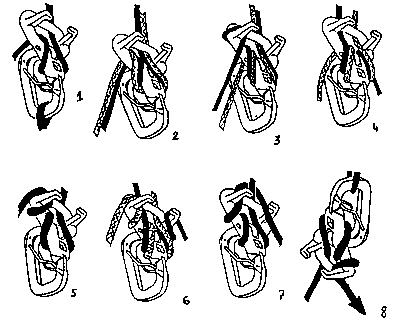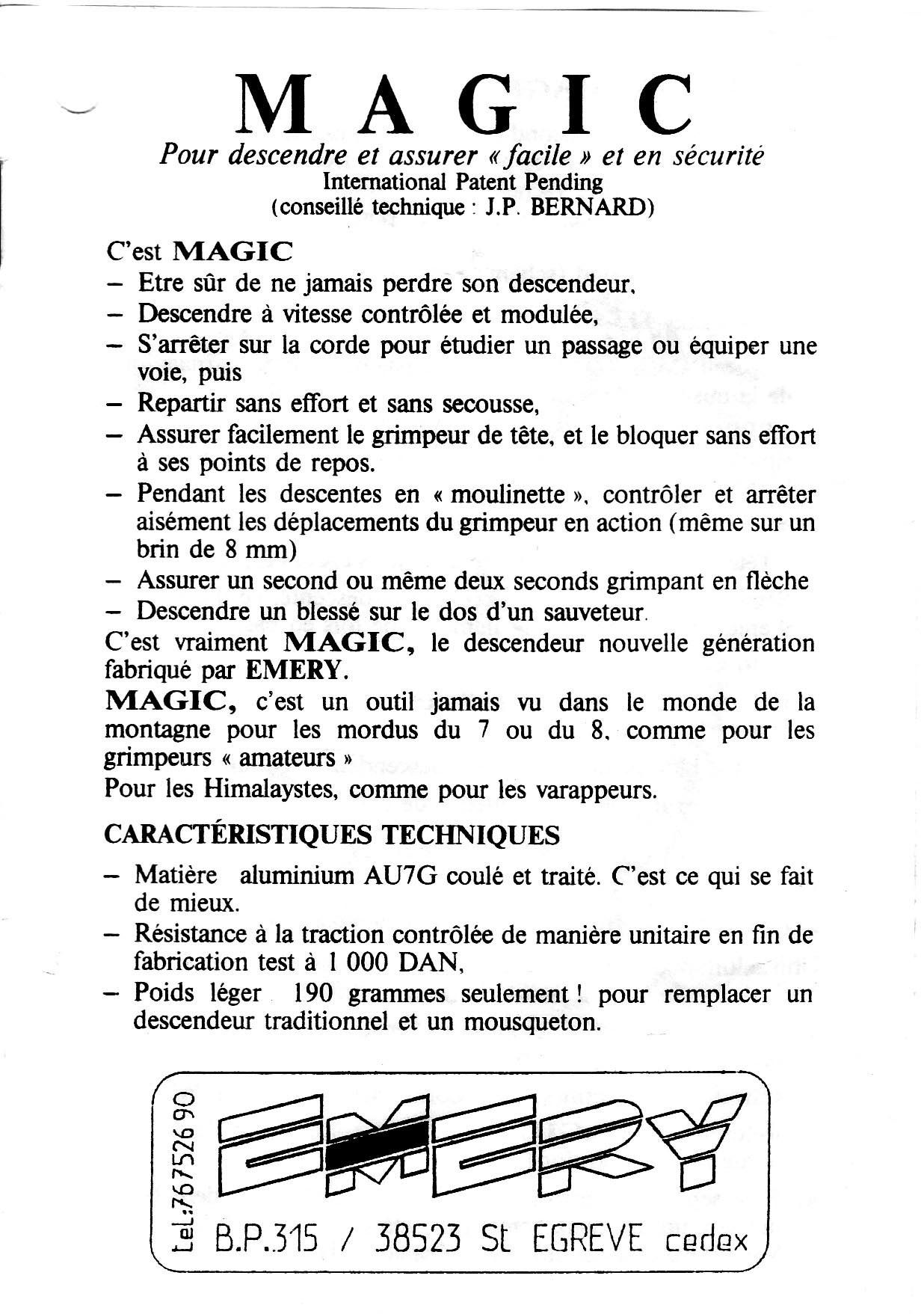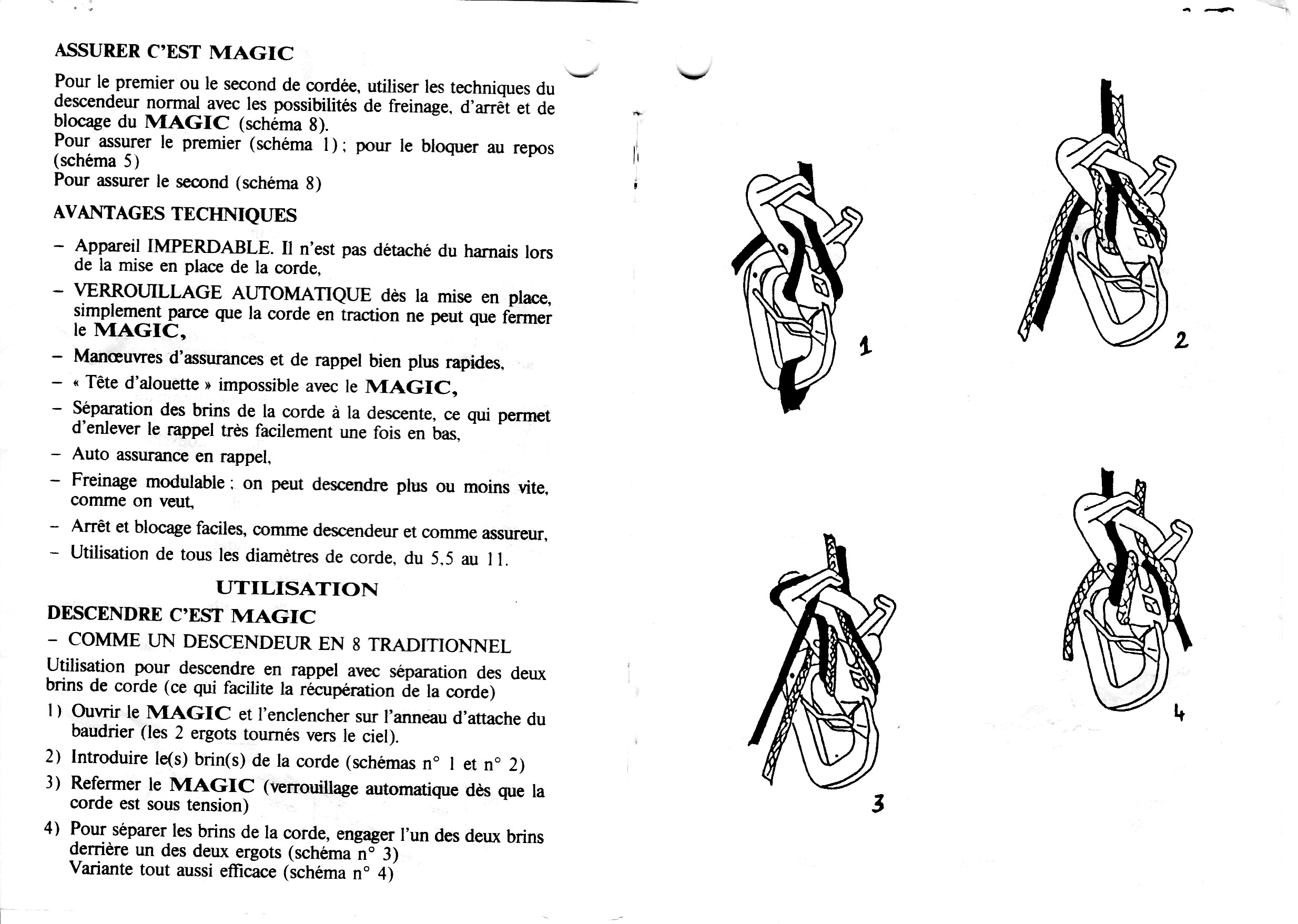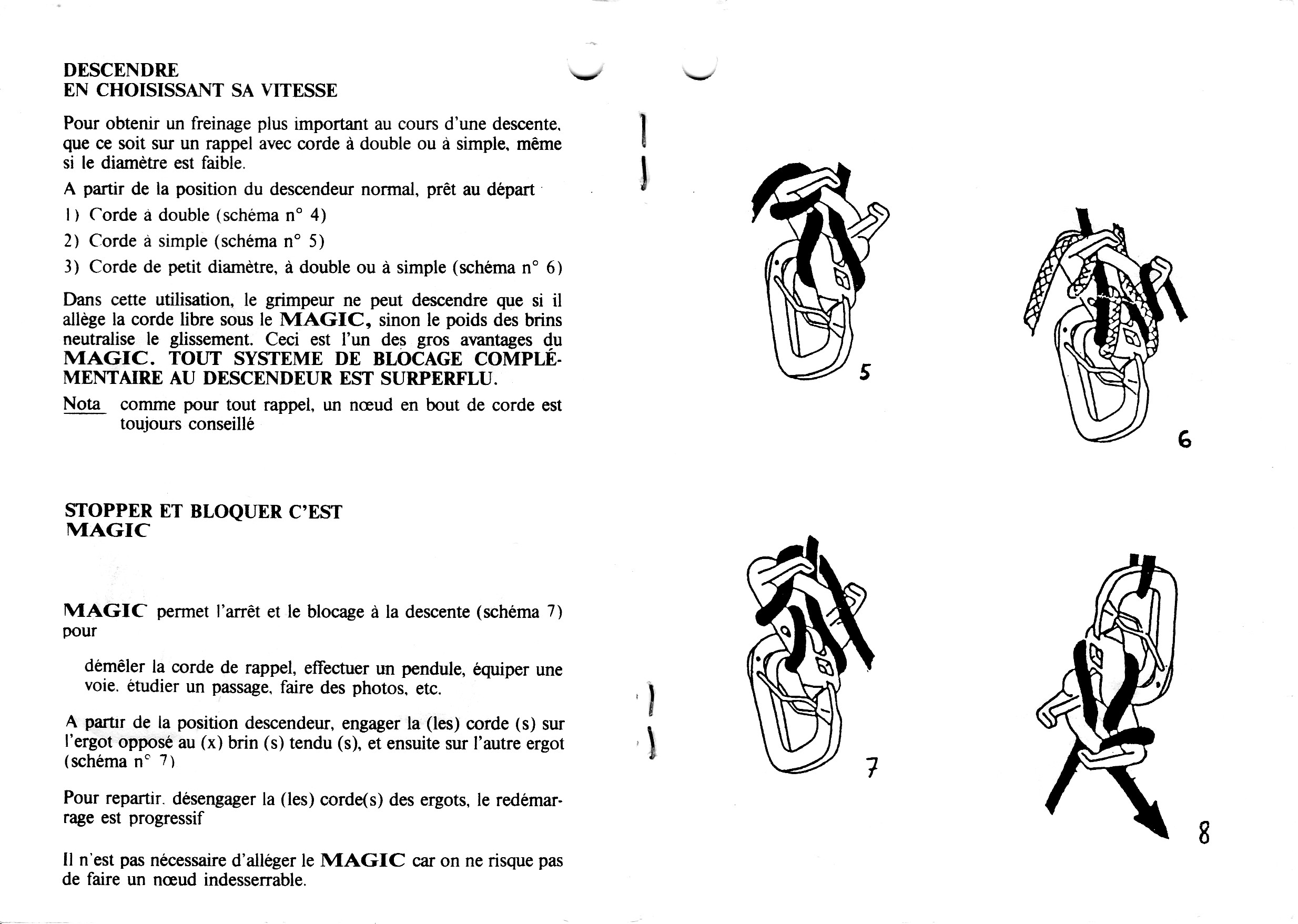Overview
[ Top
| Pratic
| Magic
| Return to Figure Eights
]
Pratic
(#359, 2429)
Technical Details
I acquired my Pratic (model 31701) from Inner Mountain Outfitters at the 1990 Old Timers Reunion. I acquired another in 2017 as part of Bob Thrun’s collection.
My Emery Pratic is 148 mm. tall, 75 mm. wide, 55 mm. thick, and weighs 180 g. It consists of two aluminum forgings hinged together. The upper forging has a 54 mm. wide, 40 mm. high rope hole. The lower forms an eye, and also has a wire spring that acts to lock the device closed.
The top of the lower forging is printed with "EMERY."
The Pratic is an articulated eight that allows one to rig without
disconnecting the eight from the seat maillon. It uses an interesting
hinge and keylock design to accomplish this. The resulting descender
is bulkier than a standard eight.
I also dislike the thick painted finish, which inevitably would
rub off onto the rope.
[ Top
| Pratic
| Magic
| Return to Figure Eights
]
Magic
(#358, 1241, 2428)
Technical Details
I acquired my Magic (model 31700) from Inner Mountain Outfitters at the 1990 Old Timers Reunion. I acquired a second one used on eBay from Jason Lubra in 2010. I acquired another in 2017 as part of Bob Thrun’s collection.
My Emery Magic s 148 mm. tall, 75 mm. wide, 78 mm. thick, and weighs 198 g. The Magic adds two ears to the Pratic.
The top of the lower forging is printed with "EMERY."
These ears give the
user something new to wrap the rope around, but I'm not sure
exactly what this accomplishes in a practical sense. The instruction
manual shows eight figures that I've copied here. The following
comments are my own:
- The first figure shows the Magic rigged using the standard
single rope figure 8 rigging.
- The second figure shows it with the standard double figure
eight rigging.
- In the third figure, one rope is flipped over one of the
ears. This provides unequal tension in the two ropes.
- The fourth figure shows two ropes rigged to separate the
outgoing and ingoing strands. I see no need to do this, and I
don't like having the two ropes run against each other in opposite
directions.
- Number five shows a single rope rigged with an extra wrap
around one of the horns. This works provided the user is careful
to keep the wrap on the horn. It isn't difficult keeping the
wrap in place, but it isn't difficult to let it fall off either.
- Number six combines all the bad features of number 4 with
doubled horn use as in Figure 5. Read my comments for number
four once and number five twice.
- Number 7: This is either a weak lock-off for light people
or a pseudo-Munter
hitch for extra friction: only you can decide by trial and
error.
- Number 8: Of course you can use the Magic (or any other descender)
for lowering things. Our Australian friends, of course, use them
to ascend (from our perspective).

[ Top
| Pratic
| Magic
]

For far more content, use a larger monitor and a full-width window.
Hundreds of cell phone users complained and asked me to for a simpler, mobile friendly site. In particular, they wanted me to limit each page to a small number of pictures and minimize my use of text. This new site provides what they asked for.





